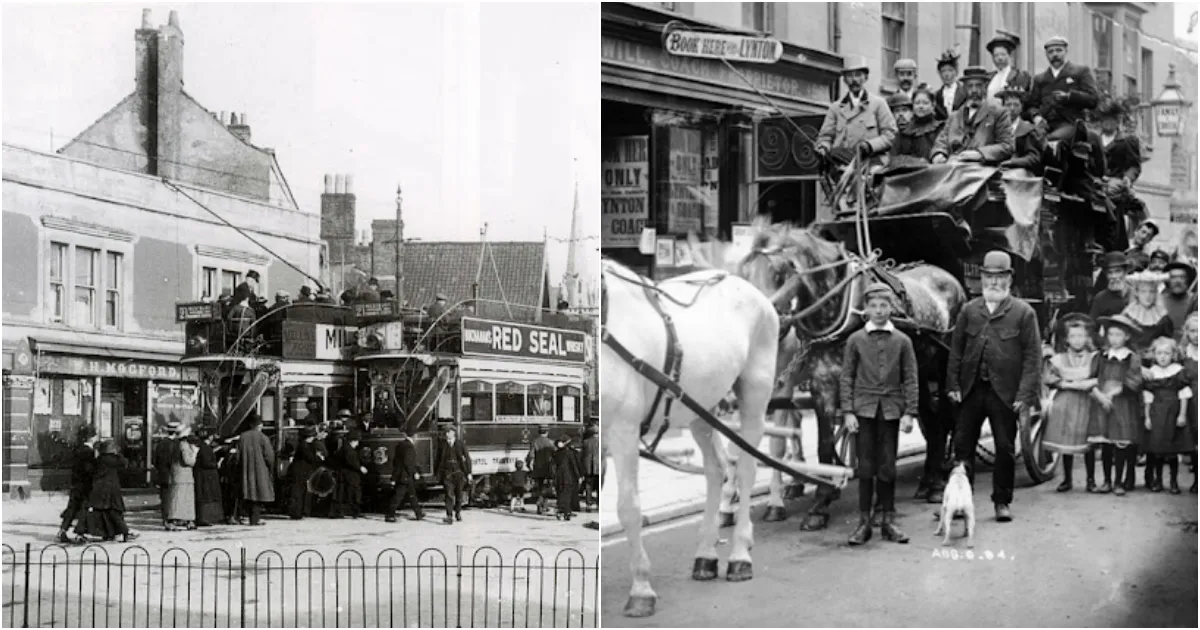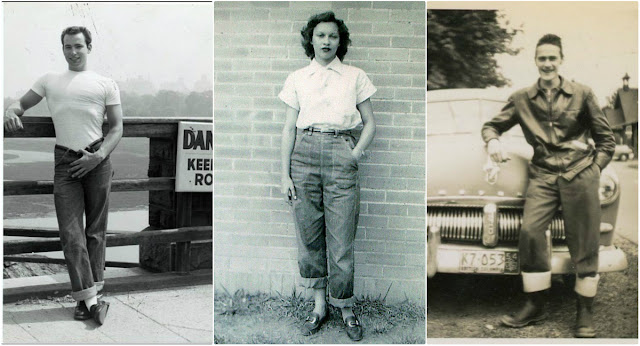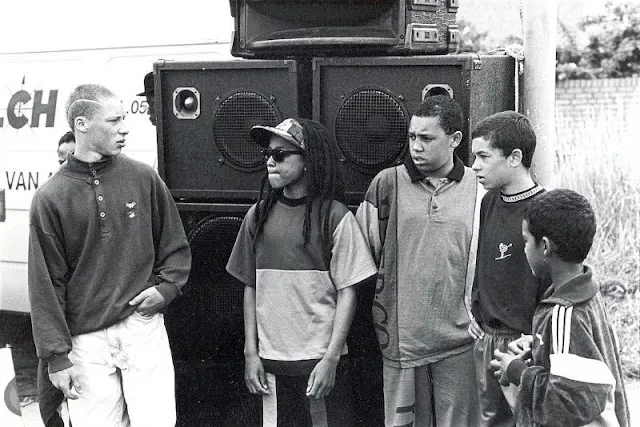
Britain’s Queen Elizabeth II addresses a vast gathering of more than a quarter of a million at the Ramlila Grounds, a huge public meeting place outside the walls of Old Delhi, India, 1961.
The first monarch to be crowned after India’s independence from British colonial rule, the Queen visited India on three occasions. The first of those visits came in 1961 when she and her husband Prince Phillip toured the country’s biggest cities like Mumbai, Chennai, and Kolkata (then called Bombay, Madras, and Calcutta respectively).
They also visited India’s most recognizable monument, the Taj Mahal, and were the guests of honor for India’s Republic Day Parade that year.
The first picture shows HM Queen Elizabeth II addressing a crowd of several thousand at Ramlila Grounds between New and Old Delhi. Loudspeakers on stands permeate the sea of faces listening to HM The Queen.

From left: Indira Gandhi (2), Vice President of India Sarvepalli Radhakrishnan (4), Queen Elizabeth II (5), President of India Dr, Rajendra Prasad (6), Prince Philip Husband of Queen (7), Vijaya Laxmi Pandit (8), Prime Minister of India Jawaharlal Nehru (9).
Though Britain and the empire emerged victorious from the Second World War, the effects of the conflict were profound, both at home and abroad. The “wind of change” ultimately meant that the British Empire’s days were numbered, and on the whole, Britain adopted a policy of peaceful disengagement from its colonies once stable, non-Communist governments were available to transfer power to.
This was in contrast to other European powers such as France and Portugal, which waged costly and ultimately unsuccessful wars to keep their empires intact. Between 1945 and 1965, the number of people under British rule outside the UK itself fell from 700 million to five million, three million of whom were in Hong Kong.
From the late 1940s to the mid-1960s, independent India’s most important relationship was with Britain. New Delhi and London had special relations because of common historical ties, political institutions, interest in economic development, high levels of trade between India and Britain, and British investment in India.
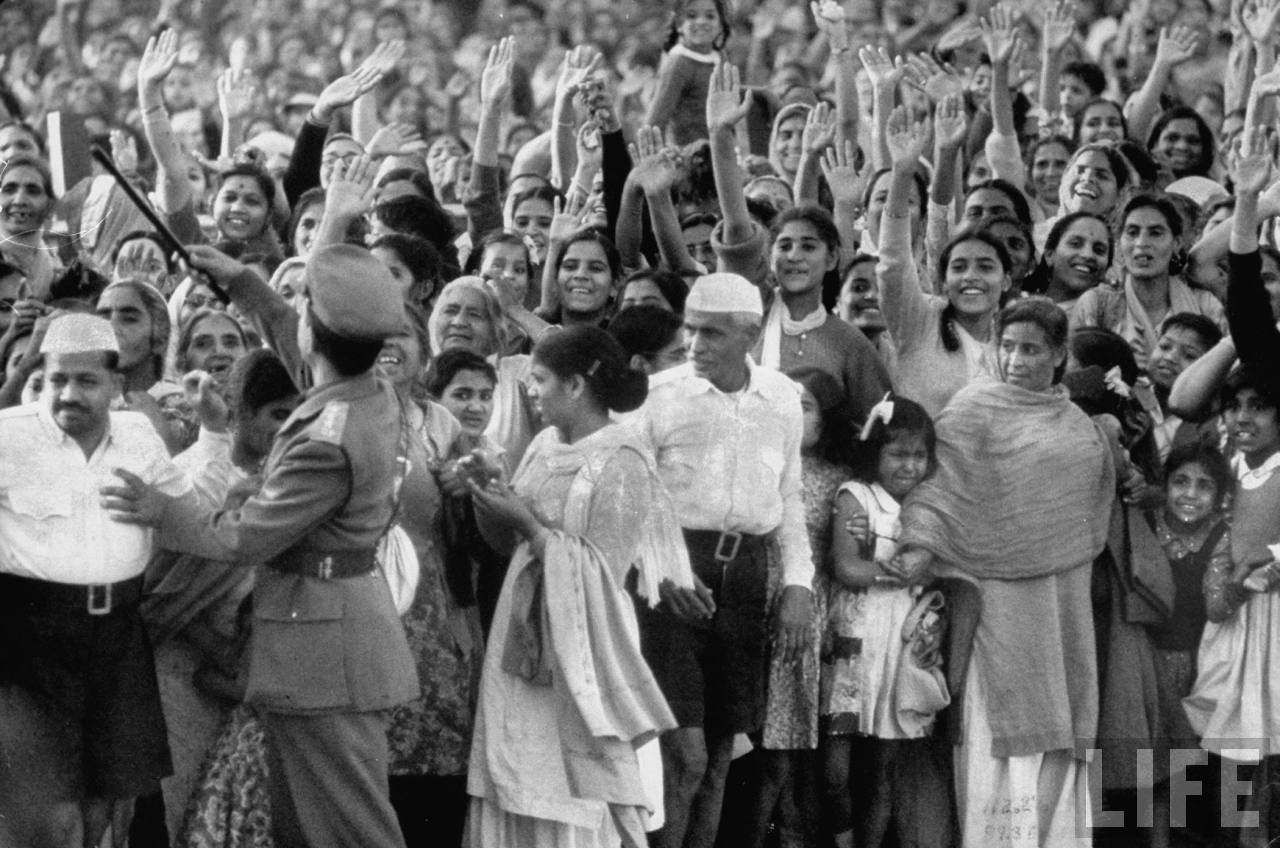
Crowd greeting Queen Elizabeth during her visit to India.

Gardens at the presidential palace during the visit of Queen Elizabeth II.

Jawaharlal Nehru greeting Queen Elizabeth II and Prince Philip.

Jawaharlal Nehru hosting Queen Elizabeth II.
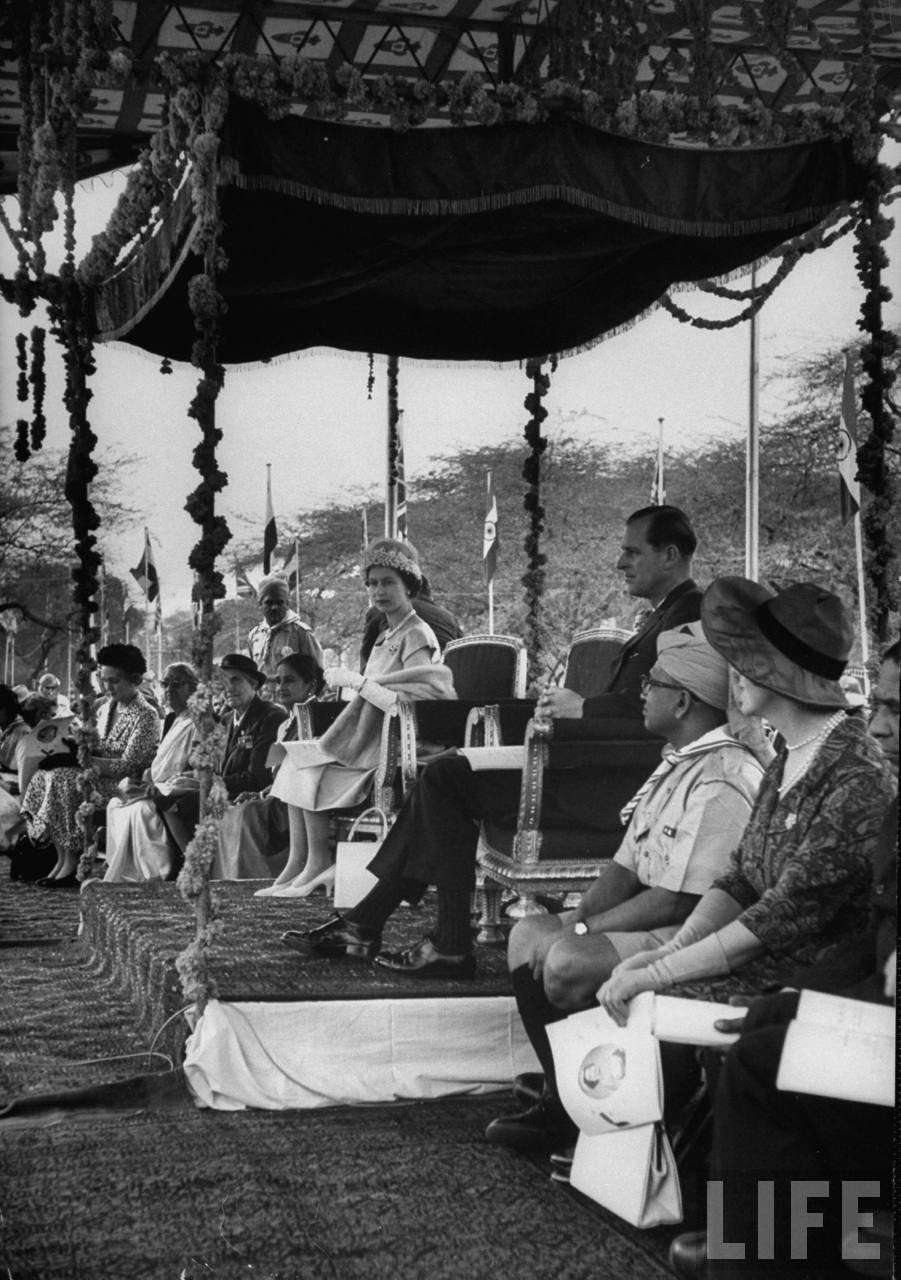
Queen Elizabeth II & Philip attending rally in their honor during their visit to India.
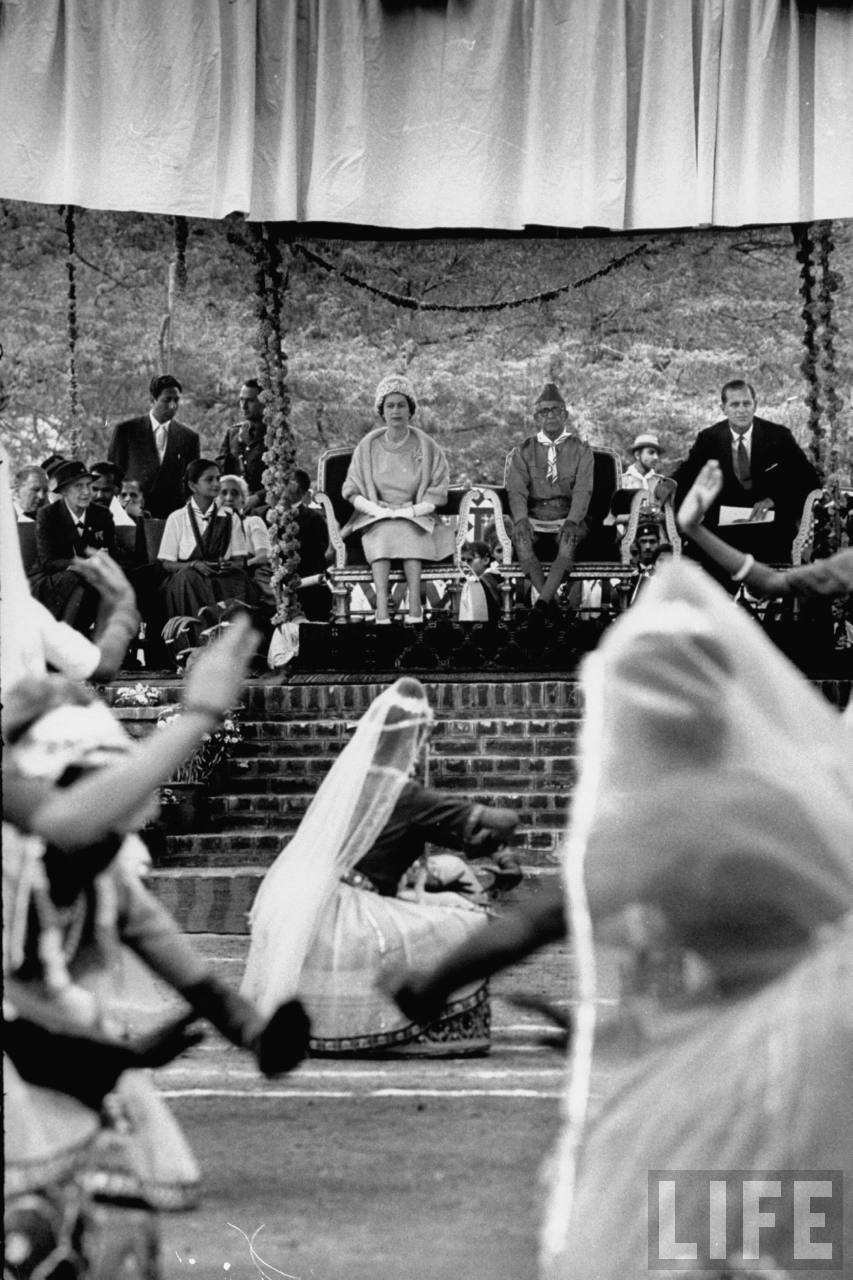
Queen Elizabeth II & Philip.

Indian people welcoming the Queen.

Queen Elizabeth II at reception.

Queen Elizabeth II presented with a turbaned doll, a Girl Guide gift to her son Prince Andrew.

Queen Elizabeth II riding in carriage with Indian President Rajendra Prasad.

Visiting British monarch Queen Elizabeth II planting tree at Gandhi memorial.

Queen Elizabeth II & Philip.

Queen Elizabeth II riding on elephant, sitting beside maharaja in howdah.

From left: Indira Gandhi (1), Vice President of India Sarvepalli Radhakrishnan (2), Queen Elizabeth II (3), President of India Dr. Rajendra Prasad (4), ?(5), Vijaya Laxmi Pandit (6).
